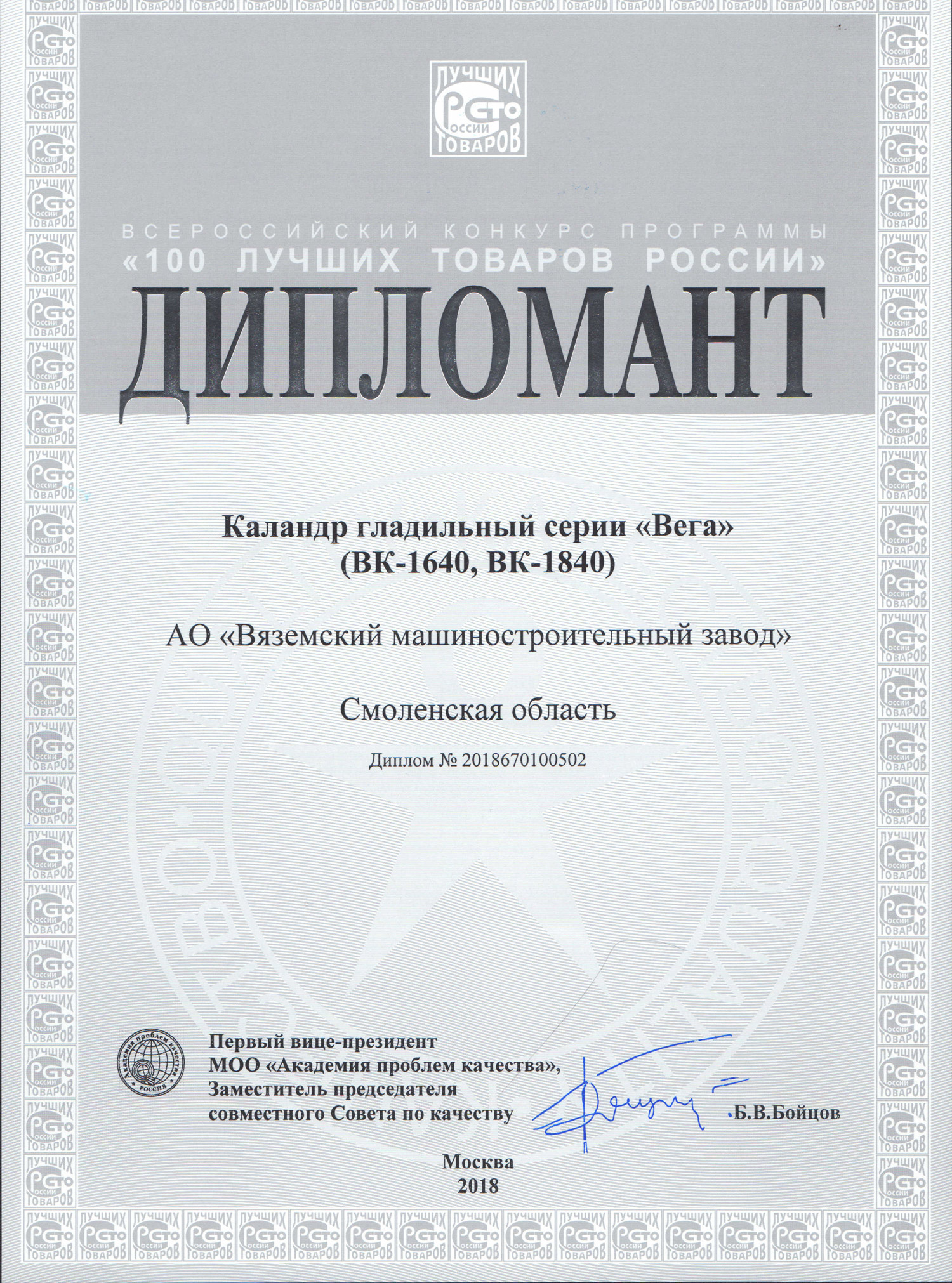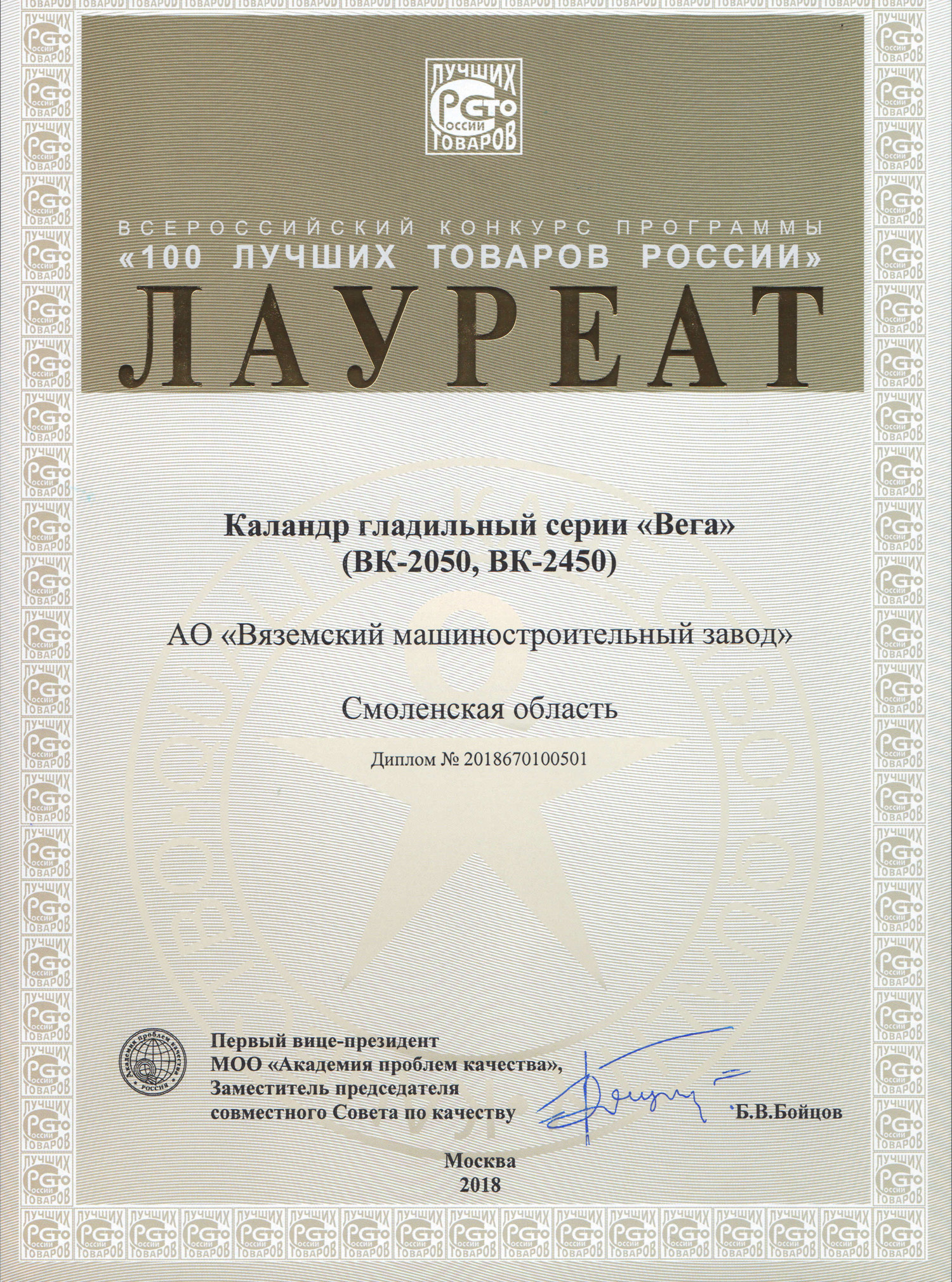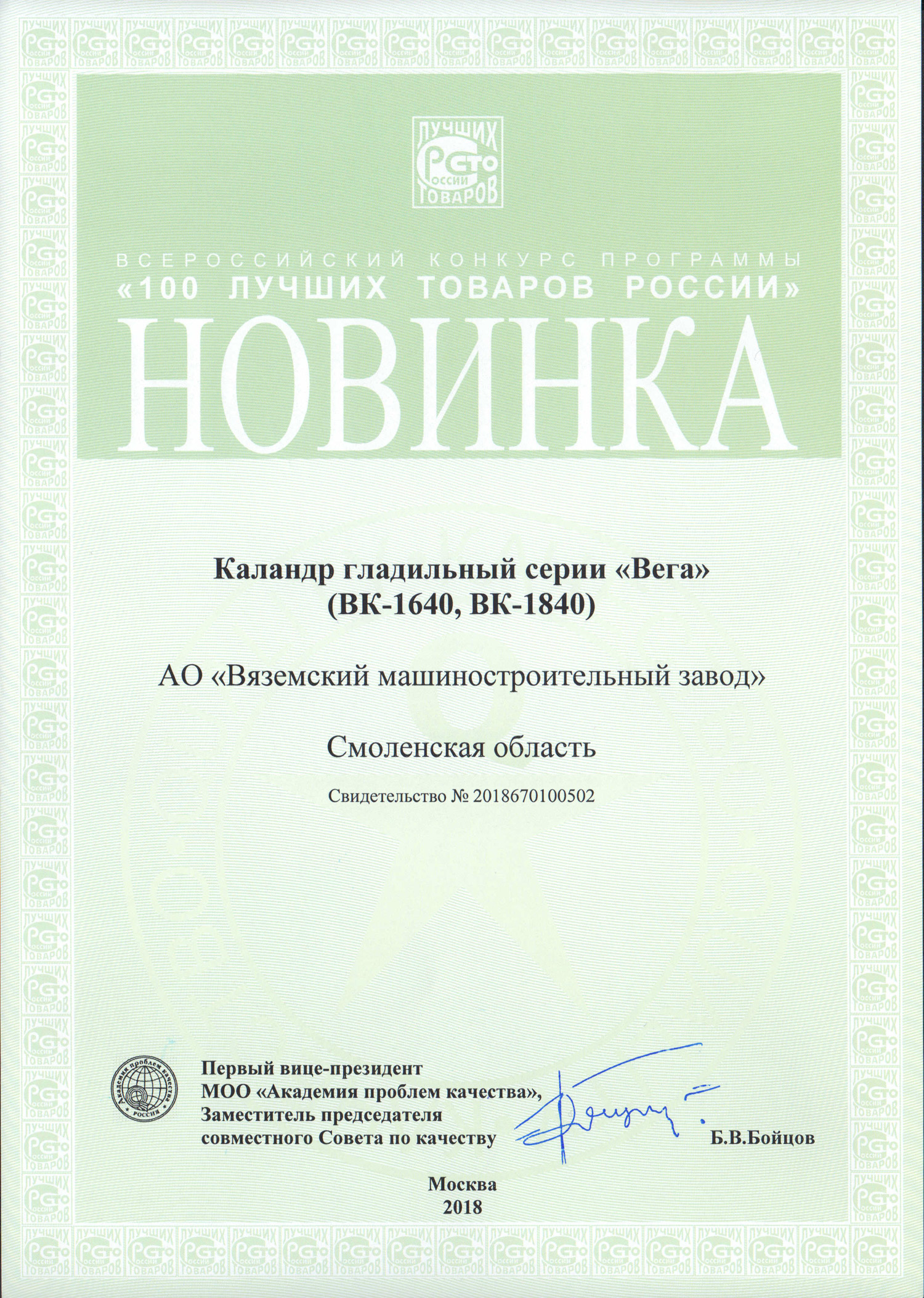Ironing is the final stage of laundry processing after washing, drying or dry cleaning, and perfectly ironed laundry, is in turn the trademark of any laundry. Herewith, high quality of service directly hinges on properly chosen equipment. For example, ironing tables, presses and form finishers are suitable for ironing shaped linen (clothing), and ironing rollers and calenders - for straight linen ironing.
As a result, "Vega" series calenders VK-1640 and VK-1840 were awarded the "100 best goods of Russia" diploma on merits. In addition, these models got "New Product of the Year" certificates al well. The "Prize Winner" certificate of the competition was awarded to the ironing calenders of the same series VK-2050 and VK-2450.
Expert commission defined modern and efficient approach to quality assurance as the main qualification criterion. According to the organizers, the market is saturated with a variety of products, but it is not easy to find real high-quality products. The competition is intended to assist consumers make the right choice.
In turn, we are sure that products may have high quality only when designed, produced and serviced by professionals. Additional justification of quality of "Vyazma" equipment were the badges of honour awarded to the employees of our plant. Thus, V. A. Golubev, Deputy General Director, head of the engineering center was awarded the badge "For achievements in the field of quality". V.A. Gribennik, Head of the bureau of ironing, finishing equipment and dry cleaners, got the badge of the "Quality expert".
Quality assessment of "Vyazma" equipment at All-Russian level is an incentive for the company to move on, improving and upgrading the model range of laundry equipment.
Distinctive parameters of rollers and calenders
| Parameter | roller | calendar | |
| Function | ironing area | drying and ironing | |
| Shaft size | diameter, mm | 180.300 | 240,414, 514 |
| length, mm | 1000-2000 | 1400-2400 | |
| Ironing speed, m/min | 1,25-5 | 1-8 | |
| Capcity, kg/hour | 15-50 | 25-85 | |
| Heating type | electrical | electrical or steam | |
We made an attempt to display fully the advantages and disadvantages of "Vyazma" ironing rollers and calenders in this article. We leave the right to choose the ironing equipment to our consumers.


